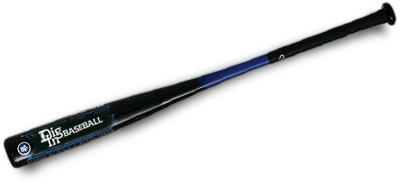"Scout" Hitters, Make Every Play
Posted in: Team Results
“Scout” Hitters, Make Every Play
Ever had a deep fly ball barely get over your glove for a double? Have you had to dive in the infield—only to have the baseball go by inches from your grasp? If either answer is “yes,” you probably can attribute it to being in the wrong spot. Proper defensive positioning is a learned (and sometimes lost) art. It’s something every ballplayer can improve.
Do your homework! As an infielder or outfielder, know who’s hitting. Typically, you play bigger, stronger, middle-of-the-order hitters deeper than the top-of-the-order “speedy” guys. Watch your opponent at batting practice before the game. Who has power and good bat speed? Who are slap hitters? Is this hitter a bunting threat? This critical information forms a mental “scouting report.” This valuable information often goes overlooked. Take mental notes of what each batter has done in previous at-bats. Don’t wait for your coach to yell it out. Lock in! Take initiative! Know this yourself.
Know the count. For the most part, play a batter to his pull side if it’s a hitter’s count: 2-0, 3-1, 1-0. Even a few steps in that direction could make a difference between a made play or not. If the count is in your pitcher’s favor (0-2, 1-2), play the batter slightly toward the opposite field. For even or full counts, play the hitter straight away. These are generalized statements. If you know the batter as an opposite field hitter, you’re foolish to play him pull side. You always make adjustments to these standards, depending on the hitter.
Move as a unit—back each other up. Outfielders and infielders should move together. Defenses often leave alleys open if they don’t move as a group. You give the hitter open field if the left fielder plays on the foul line, while the center fielder and right fielder shade toward the opposite foul line. Since center field and shortstop usually are two of your better defensive players and athletes, I’d recommend they move the outfielders and infielders. Those two players need to “captain” their teammates as “field generals.” On every pitch, defenders have a place to be during the pitch and after the pitch—regardless of the ball going into play. Back up; communicate loudly. Be mentally and physically ready, every pitch, every out of the game. Being mentally focused is important to proper defensive positioning. This isn’t an easy thing to do in baseball. You may not touch the ball all game and then—boom!—the ball is zooming toward you at a critical moment! It only takes one pitch to change a game’s outcome.
What steps do you take before and during the game to gather information on a hitter? Do you wait for your coach to tell you where to play on the field, before the pitch? ~ By Coach Will Frazier. Coach Frazier holds the University of Maryland’s all-time batting record for doubles with 60. Contact him at wfrazier@diginbaseball.com.





